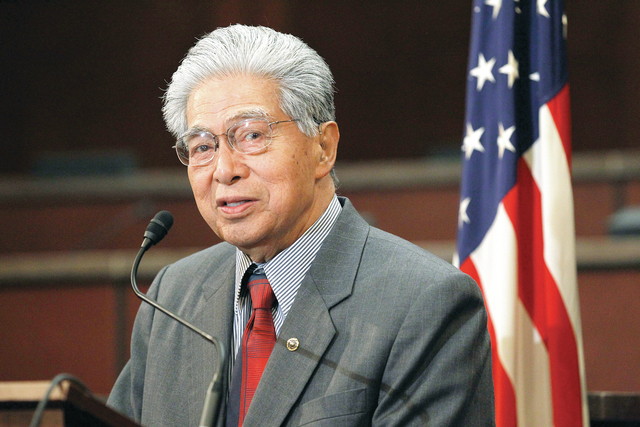HONOLULU — Former U.S. Sen. Daniel Akaka has endorsed the construction of the controversial Thirty Meter Telescope in his new autobiography, saying the cutting-edge observatory will generate “huge” educational opportunities and jobs for the Hawaiian community.
HONOLULU — Former U.S. Sen. Daniel Akaka has endorsed the construction of the controversial Thirty Meter Telescope in his new autobiography, saying the cutting-edge observatory will generate “huge” educational opportunities and jobs for the Hawaiian community.
In his new book, “One Voice — My Life, Times and Hopes for Hawai’i,” Akaka said Mauna Kea carries “tremendous mana,” and it’s easy to see why some people consider the mountain sacred.
“But like the opinions on Hawaiian self-governance, that view is not universal,” he wrote. “Is the entire island, down to the seafloor, sacred? Or is it the part of the mountain above sea level? Or is it just the top of the mountain? And if so, sacred to whom?”
The opposition to the $1.4 billion TMT has been led largely by Native Hawaiians who also oppose the kind of nation-within-a-nation model of governance that Akaka attempted to establish in Congress.
The fate of the observatory is currently in the hands of the state Board of Land and Natural Resources, which heard arguments for and against the project in Hilo last week to conclude a contested case hearing on its construction permit.
If construction does get the green light, the 18-story observatory is expected to result in some 130 permanent jobs. TMT International Observatory, the California nonprofit that proposes to develop and run the telescope, is already contributing $1 million a year in the form of scholarships and education for Hawaii island students.
Akaka, who turned 93 earlier this month, served Hawaii in the U.S. House of Representatives from 1976 to 1990 and the U.S. Senate from 1990 until his retirement in 2013.
In his book, he said he feels certain astronomers using space-based observatories, in concert with telescopes like the Keck on Mauna Kea, will find evidence of life on planets orbiting nearby stars in the coming decades.
“That will be a truly monumental discovery,” he wrote. “This quest by astronomers conforms with, rather than undercuts, our traditions. The search for other habitable planets shares much in common with the Polynesians’ canoe-borne exploration for habitable islands.”
Akaka said that in hula, the ancient and modern forms of the dance complement one another.
“The old need not be the enemy of the new,” he said, adding, “Let’s allow Mauna Kea, rightfully, to become a bridge between our past, as Hawaiians, and our future.”

